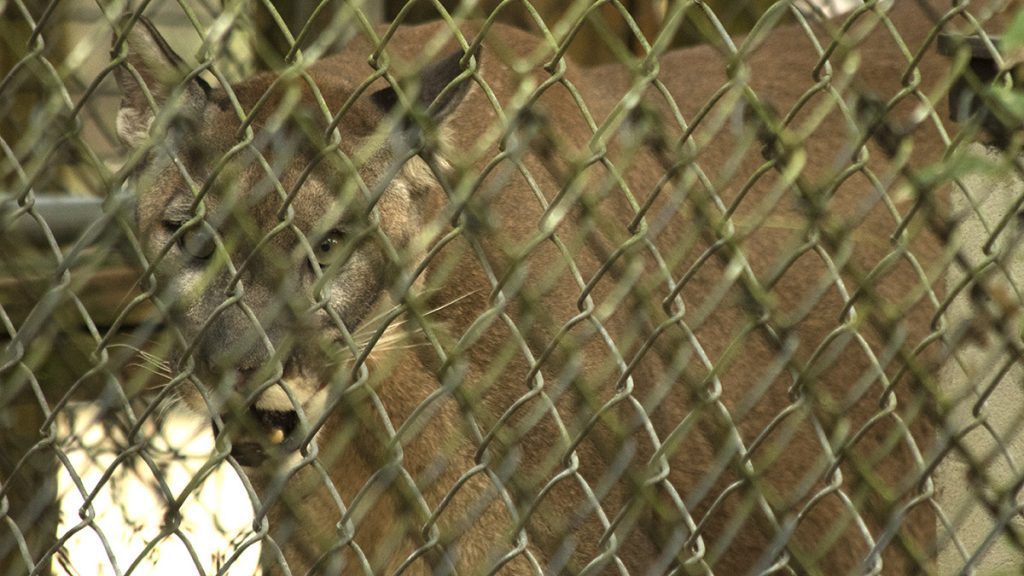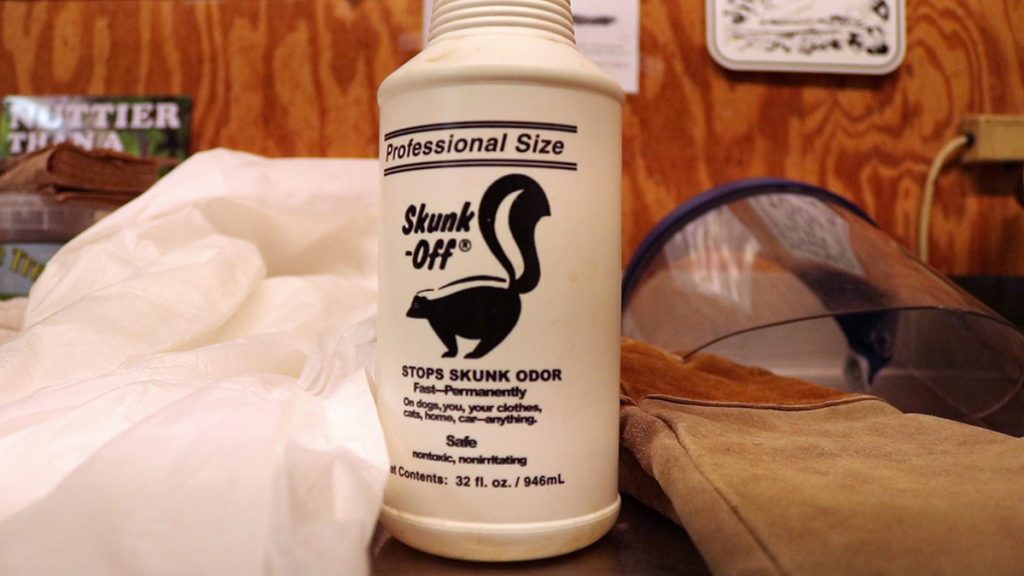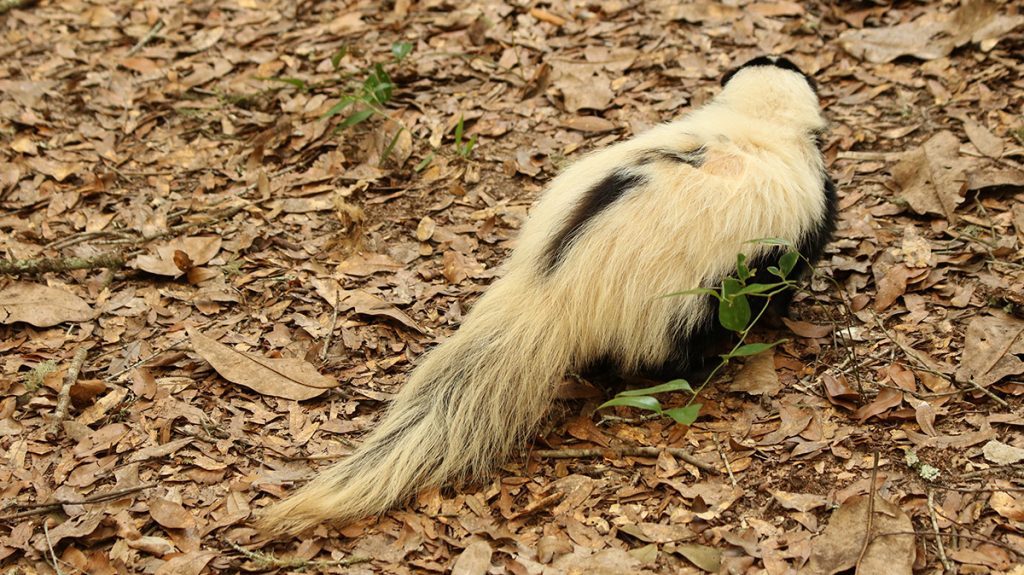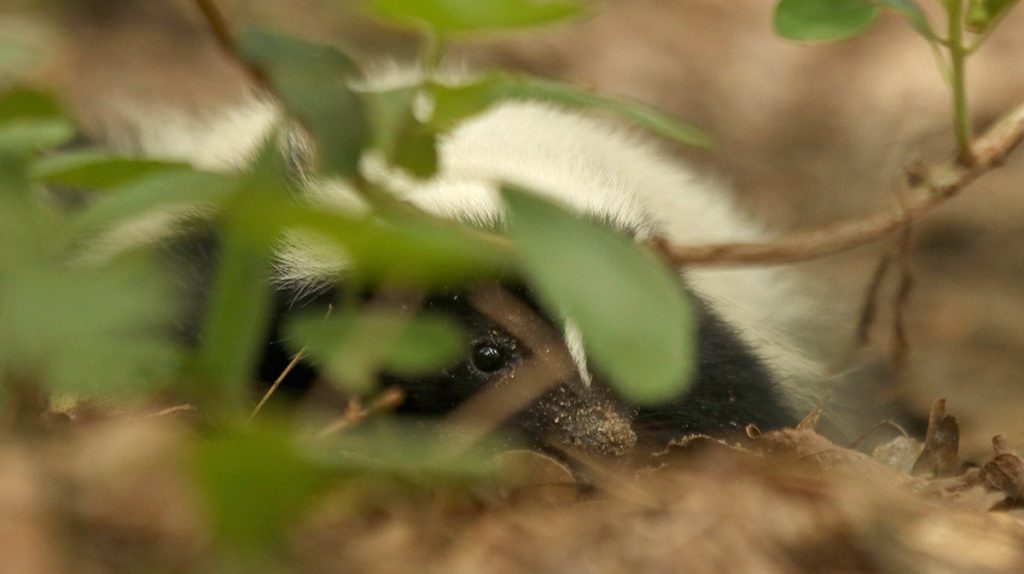How many of you have seen the striped skunks at the Tallahassee Museum? Have you ever seen a skunk in the wild?
Subscribe to the WFSU Ecology Blog to receive more videos and articles about our local, natural areas, and subscribe to the WFSU Ecology Youtube Channel
I’m in the Florida panther enclosure at the Tallahassee Museum, and I’ve never been more scared of an animal. Here at the Museum, I’ve been in with a pack of red wolves. Last year, I spent a day in the forest with Bruce Means and an eastern diamondback rattlesnake. And like any Floridian who likes water, I’ve spent a fair amount of time in proximity to alligators. Those are all animals that could seriously hurt or kill me, but that’s nothing compared to right now. Right now, a striped skunk is running directly at me.
A few months ago, I was talking to the Museum’s animal staff in the Animal Kitchen. This building is centrally located between the otter, black bear, and Florida panther exhibits, with pathways to the bobcats and red wolves. I had just finished shooting some of the final footage for our Red Wolf Puppy Show. I was mentioning that while I like getting footage of animals in the wild, it was great to have this level of access to an animal I’m not likely to see, even in the only wild space where they are locally on Saint Vincent Island. So I wondered aloud- what other animal might we spotlight this way? What animal lives around us, but that we’re not likely to see?
Assistant animal curator Suzie Buzzo knew right away- the striped skunks.
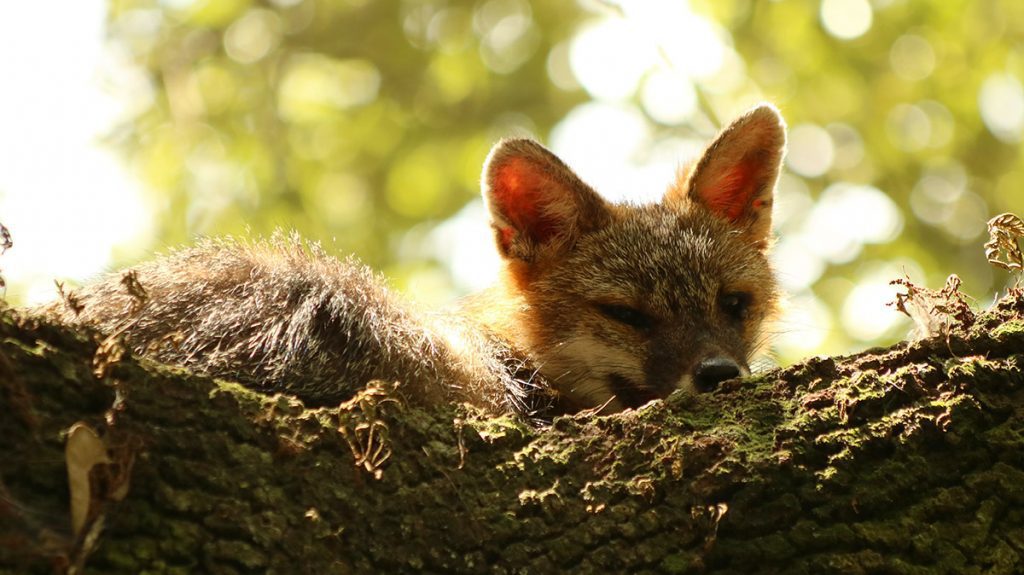
At the Tallahassee Museum, skunks share their habitat with red and gray foxes. The funky odor around the exhibit is usually that of foxes marking their territory, and not that of skunk spray.
I know people who have visited the “Junior Museum” for forty years and never seen the skunks on exhibit there. People always say they smell the skunks, but as we learn in the video, we’re most likely smelling the markings of the skunks’ cohabitants, the red and gray foxes.
Unlike the red wolf, these animals are everywhere. And yet, we rarely, if ever, see them.
When the panther’s away, the skunks will play
The skunk ran right past me.
A couple of weeks earlier, the Tallahassee Museum’s two striped skunks were taken out of their exhibit to be vaccinated. Since they were already displaced, it seemed to Suzie like a good time for me to come over and spend some time with them. She didn’t think we should shoot in their exhibit, as they would immediately run into their den.
So she lured the panther into a holding cage just outside of its exhibit, and let the skunks loose in there. On one hand, this would give them plenty of space to run and dig. On the other hand, it would provide environmental enrichment for both sets of animals. The skunks would run where a large predator has marked, and would react to these markings. And when the panther returned, it would smell the skunks and become defensive over its territory.
As we learned in the Puppy Show, environmental enrichment is what keeps a captive animal responding to stimuli as they would in the wild. Today, I’m a part of the skunks’ environmental enrichment, an unfamiliar animal in an unfamiliar place. How would they respond to me? Would they feel threatened?
Luckily, they did not.
To spray, or not to spray
Skunks only really spray when they have no other option. Their primary defense is to run away from predators. As always when shooting animals, I walk up slowly and get as close as they seem comfortable with. If they ever felt cornered, I’d get a searing face full of spray.
“Some people say that, that it smells like burning,” Suzie says. “But to me, it’s such a distinct smell, because I’ve had it on me enough times.”
The Tallahassee Museum has an amazing collection of sprays. In the Puppy Show, we saw their variety of animal urine sprays, used to enrich the different animals’ habitats with scents they’d encounter in nature. They also have a bottle of zoological grade “Skunk Off.”
“It’s better than tomato juice or peroxide,” Suzie says. “You can put it on your clothes, wash your clothes in it. You can definitely put it on your skin.”
Most of us don’t do what the staff here does, which is to corner the animal and pick it up at those times when it needs care. That gives the animal staff here an insight most of us don’t have into this animal’s famous defense mechanism.
“Sometime they let out a little warning spray,” says Laura Augustine, an animal handler at the Museum. At those times, the staff feels lucky they didn’t receive a full blast, which will burn the eyes if they come in contact with it.
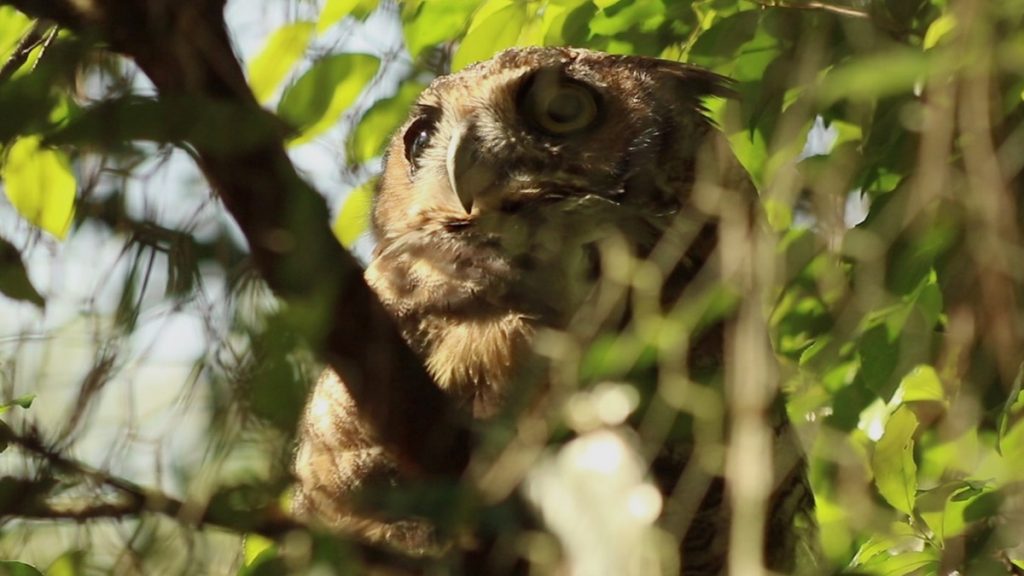
The great horned owl, one of the few predators unconcerned enough with a skunk’s spray to eat the animal.
Eat or be Eaten | Prey and Predators of the Striped Skunk
If an animal wasn’t affected by the spray, the skunk would make a good sized meal.
“We have an animal that is one of the only predators of skunks.” Laura says. “That’s the great horned owl. So, they don’t have a really good sense of smell, so they can swoop down with their talons, carry two to three times their own body weight, take off with a skunk, and have a tasty meal in their nest.”
While the striped skunk might not have many predators, it has quite a few foods it likes to eat.
“They are one of the few animals that eat their vegetables,” Suzie says. “They will eat their broccoli and carrots, they love nuts. And we give them some protein of different varieties.”
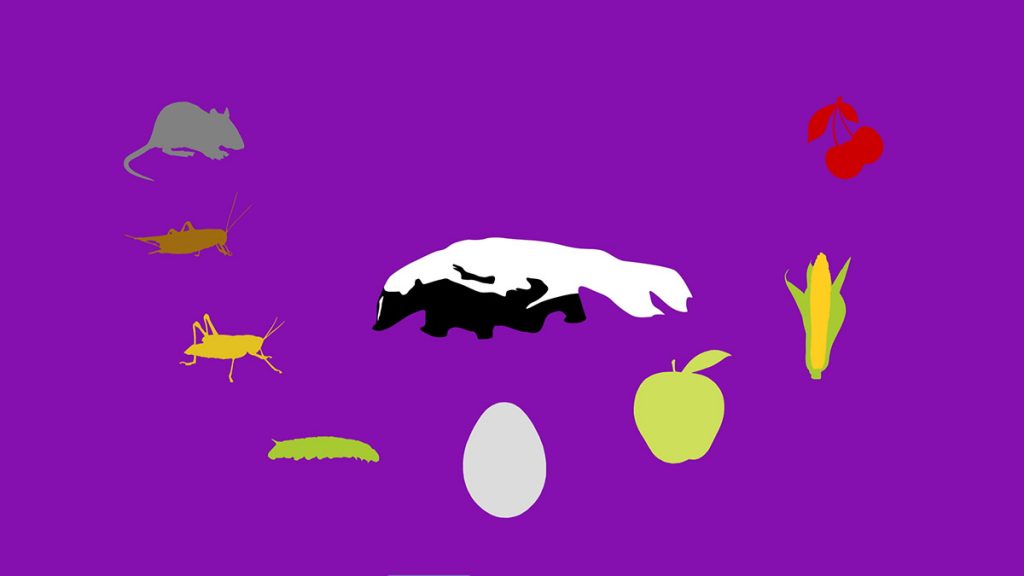
A graphic depicting a striped skunk and some of the foods it eats- mice, crickets, grasshoppers, caterpillars, eggs, apples, corn, and cherries.
In nature, they’ll eat anything from mice, grasshoppers, and crickets, to a variety of fruits and vegetables. They will steal eggs and eat chickens, and they will eat corn. But while they might make a farmer mad (like red wolves have), they’re not in any danger as a species. They’re nocturnal, and they sleep underground in dens during the day. And since skunks are omnivorous, they more easily adapt to habitats altered by human development.
Striped skunks are listed as a Species of Least Concern. They’re everywhere, even if we hardly see them.
There is another skunk species in North America, the spotted skunk. Spotted skunk populations appeared to crash in the 1940s, and have declined further since then, except, it appears, in Florida. So there’s another animal for my bucket list.

